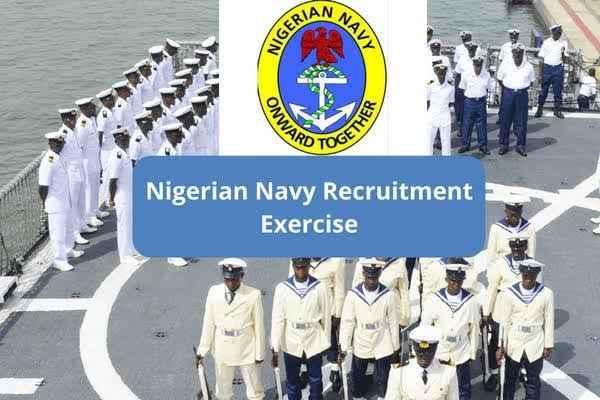Nimasa Ranks And Symbols: Understanding The Maritime Structure

The Nigerian Maritime Administration and Safety Agency (NIMASA) is central to regulating Nigeria’s maritime industry. Established to ensure maritime safety, promote shipping, and protect the marine environment, NIMASA employs a structured rank and symbol system that defines the authority, responsibilities, and status of each role within the agency. This hierarchy is essential for operational effectiveness and aligns with global maritime standards.
Understanding the NIMASA Rank Structure
NIMASA’s rank system mirrors that of a naval or coast guard institution, with a clear hierarchy starting from entry-level positions up to the Director-General. The structure reflects the different areas of expertise and functions within the organization, including maritime security, safety, and regulatory services. Here’s an overview of the rank structure, from the highest level to entry-level positions:
1. Director-General (DG)
The Director-General is the chief executive officer and the topmost authority within NIMASA. This role oversees all administrative and operational functions, implementing policies, and ensuring alignment with Nigeria’s maritime laws and international standards.
The DG’s responsibilities include international representation, policy formulation, and coordinating with other government agencies to strengthen maritime governance in Nigeria.
2. Executive Directors (ED)
Directly reporting to the Director-General, Executive Directors head specific departments such as Maritime Safety, Shipping Development, and Administration & Finance. They are responsible for key functions that keep NIMASA running effectively.
Each ED manages policies and strategic initiatives within their respective departments, driving the agency’s core mandates on a national and international level.
3. Directors and Heads of Departments
Directors lead various specialized departments, including the Legal Services, Marine Environment Management, Maritime Labour, and the Nigerian Ship Registry. They work on department-specific issues like enforcing maritime labor laws, environmental protection, and ship registration.
NIMASA’s directors play a crucial role in implementing regulatory frameworks and managing critical maritime safety measures, ensuring all operations meet established standards.
4. Managers and Senior Officers
Managers in NIMASA support directors in administrative and operational tasks. They are often in charge of specific areas within departments and handle project management, staff supervision, and department performance.
Senior officers manage field-level activities such as port state control inspections, maritime security measures, and environmental regulation compliance. They bridge the gap between senior management and ground-level operations, ensuring policies are applied consistently.
5. Maritime Safety Officers
Maritime Safety Officers carry out essential duties, including vessel inspections, ensuring compliance with maritime safety protocols, and maintaining standards for safe operations at sea.
They also engage in on-ground activities like accident investigations and safety audits, contributing significantly to maritime risk management and safety enhancement.
6. Entry-Level Officers and Field Inspectors
Entry-level roles provide foundational experience in maritime administration, safety, and environmental management. New recruits often start as inspectors, participating in safety checks, pollution control, and other regulatory activities under supervision.
Field inspectors play a critical role by conducting initial assessments of ships, facilities, and crew to ensure compliance with local and international maritime regulations.
NIMASA Symbols and Their Significance
In line with maritime tradition, NIMASA’s ranks are associated with distinct symbols that represent authority and rank within the agency. Each level has a unique set of insignia, usually in the form of epaulettes or badges on uniforms, which visually distinguish ranks and reflect the authority of the position. Here’s a breakdown:
-
Director-General and Executive Directors: The DG and EDs wear insignia similar to high-ranking naval officers, including symbols like anchor or star icons that denote leadership and command.
-
Directors: Directors may have insignia featuring bars or additional symbols that indicate their senior position and area of specialty, such as maritime law or environmental protection.
-
Managers and Senior Officers: Mid-level officers often have fewer symbols but retain insignia that indicates their department and rank, showing their role in supervising and implementing policies.
-
Maritime Safety Officers and Inspectors: Field officers and inspectors typically have simpler insignia, representing their roles in enforcing regulations and conducting inspections.
How NIMASA’s Structure Supports Its Mandates
NIMASA’s organizational structure is designed to meet the core mandates of maritime safety, maritime security, and shipping development. By assigning specific ranks and roles, NIMASA ensures that the agency operates effectively across various areas:
-
Maritime Safety and Security: Through ranks like Maritime Safety Officers and Senior Officers, NIMASA ensures Nigeria’s coastal and inland waterways are safe for shipping and free from threats like piracy. Field inspectors and safety officers are responsible for the day-to-day implementation of safety protocols and conducting regular inspections.
-
Environmental Management: The Marine Environment Management department, led by senior directors and officers, oversees activities that protect Nigeria’s marine environment from pollution. Officers in this rank perform compliance inspections, enforce anti-pollution regulations, and ensure shipping companies adhere to environmental standards.
-
Shipping Development: With ranks dedicated to shipping development, NIMASA fosters Nigeria’s domestic shipping capacity. Executive Directors in charge of Shipping Development work on policies that encourage local ship ownership, build maritime infrastructure, and increase Nigeria’s participation in international shipping.
Path to Promotion in NIMASA
Promotion within NIMASA is primarily based on experience, qualifications, and performance. Officers move up the ranks through standardized exams and evaluations, with higher qualifications and years of service improving prospects for advancement. Those who excel in their roles and demonstrate leadership qualities may receive promotions, which come with additional responsibilities, benefits, and insignia adjustments.
Conclusion
The ranks and symbols within NIMASA are more than just titles—they represent a structured system that enables the agency to fulfill its mission of ensuring safe, secure, and sustainable maritime operations in Nigeria. The rank structure empowers individuals at every level to contribute to Nigeria’s maritime governance, from high-level policy development to on-ground regulatory enforcement. Understanding this system offers insights into how NIMASA navigates challenges in maritime security, safety, and environmental stewardship, making it a pivotal institution in Nigeria’s economic and environmental landscape






